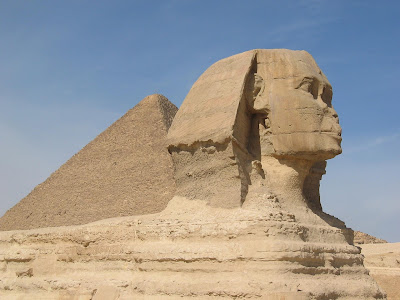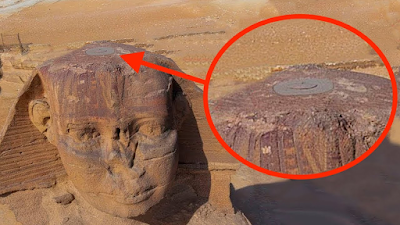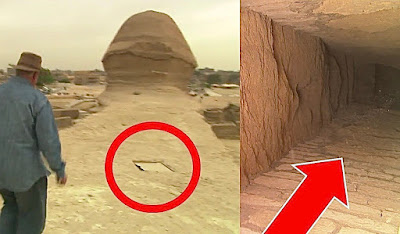
The Great Pyramid of Giza is one of the world's most enigmatic structures, leaving researchers, historians, and tourists baffled by its mystery. Despite numerous attempts to solve its puzzle, there are still many enigmas surrounding this antique construction that have yet to be answered. It's fascinating that out of the Seven Wonders of the Ancient World, the Great Pyramid is the only one still standing. The precision with which it was built, the mystery behind how massive blocks of stone were quarried and transported, and the incorporation of these stones into the pyramid still leave many unanswered questions.
What makes the Great Pyramid even more intriguing is that it's the most accurately aligned structure on Earth, facing true north with a remarkable 3/60th of a degree of error. In fact, there are numerous other details about the Great Pyramid that are equally impressive. In this updated article, we explore various facts about the Great Pyramid, revealing ultimate evidence that this ancient structure was built by a civilization far more advanced than what mainstream scholars have been willing to admit. With bite-size chapters, readers will be drawn into the intriguing world of the Great Pyramid, eager to uncover the secrets behind this architectural masterpiece.
1. The Mysterious Numeric Value of 144,000
The Great Pyramid of Giza is a marvel of ancient engineering, and one of its most intriguing aspects is the role of the numeric value of 144,000 in its construction. This value is thought to have played a key role in the harmonic connection that determined the exact size of the structure. The outer mantle of the pyramid was composed of 144,000 casing stones, all highly polished and flat to an accuracy of 1/100th of an inch, weighing approximately 15 tons each. The incorporation of such complex mathematical formulas in the pyramid's construction suggests the involvement of a far more advanced civilization than previously thought.
2. The Pyramid That Shone Like a Star
The Great Pyramid of Giza was originally covered with casing stones made of highly polished limestone, which reflected the sun's light and made the pyramid shine like a jewel. The ancient Egyptians called the Great Pyramid "Ikhet," meaning "Glorious Light." The pyramid's original casing stones have since been removed and used to build mosques, but it has been calculated that the original pyramid with its casing stones would have acted like gigantic mirrors, reflecting light so powerful that it would have been visible from the moon as a shining star on Earth. The mystery of how these blocks were transported and assembled into the pyramid remains unsolved.
3. Precision Alignment With True North
The Great Pyramid of Giza is the most accurately aligned structure in existence, facing true north with only 3/60th of a degree of error. The position of the North Pole moves over time, but the pyramid was once exactly aligned with it. Additionally, the Great Pyramid is located at the centre of the land mass of the earth. The east/west parallel that crosses the most land and the north/south meridian that crosses the most land intersect in two places on the earth, one in the ocean and the other at the Great Pyramid.
4. The Only 8-Sided Pyramid in Egypt
The Great Pyramid of Giza is the only pyramid discovered to date that has eight sides. The centres of its four sides are indented with an extraordinary degree of precision, forming this unique shape that is only detectable from the air at dawn and sunset on the spring and autumn equinoxes, under the proper lighting conditions. This effect is not visible from the ground or from a distance, and the pyramid is the only one built this way.
5. The Celestial Connection
While many believe there is a correlation between the constellation of Orion and the Pyramids at the Giza plateau, the Descending Passage of the Great Pyramid also pointed to the pole star Alpha Draconis, circa 2170-2144 BCE, which was the North Star at that point in time. No other star has aligned with the passage since then. These celestial connections add to the enigma of the Great Pyramid and suggest an advanced understanding of astronomy by its builders.
6. The Great Pyramid: Not just a tomb
Despite popular belief that the Great Pyramid of Giza was built as a burial place for Pharaohs, no mummy has ever been discovered within its walls. This leads to speculation about the true purpose of the pyramid. Mainstream scholars believe it was constructed to house the remains of a Pharaoh, but the absence of a mummy suggests otherwise. When the pyramid was first explored by the Arabs in 820 AD, the only thing found inside was an empty granite box in the King's chamber known as the "coffer".
7. The Enigma of the Great Pyramid's Coffin
The mysterious granite coffer found in the King's chamber of the Great Pyramid of Giza raises questions about its purpose. The solid block of granite required the use of bronze saws with sapphire teeth, as well as tubular drills with tremendous force to hollow out the interior. The microscopic examination of the coffer has revealed that it was made using a fixed point drill with hard jewel bits, utilizing a drilling force of 2 tons. If the coffin was not intended for a Pharaoh, then what was its true function?
The Great Pyramid of Egypt
The Great Pyramid of Giza is a remarkable and enigmatic structure that has puzzled and fascinated people for centuries. Despite the vast amount of research that has been conducted on the pyramid, there are still many unanswered questions about its purpose, construction, and the people who built it. The various theories and interpretations surrounding the pyramid continue to intrigue researchers, archaeologists, and historians to this day.
One thing that is certain is that the Great Pyramid of Giza is a testament to the incredible engineering and architectural skills of its builders. The precision and complexity of the pyramid's construction are unparalleled in ancient history and even challenge modern engineering feats. The pyramid's alignment with true north, its eight-sided structure, and the mathematical formulas incorporated in its design all suggest a sophisticated understanding of astronomy, geometry, and mathematics by its builders.
Moreover, the Great Pyramid's unique features such as the polished limestone casing stones, the mysterious coffin in the King's chamber, and the alleged power plant design only add to the mystique and intrigue surrounding the pyramid. The absence of a mummy in the pyramid, despite mainstream theories suggesting otherwise, only deepens the mystery of the pyramid's purpose.
As we continue to uncover new information and perspectives on the Great Pyramid of Giza, we can only hope to gain a deeper understanding of this ancient wonder. Its significance and symbolism in ancient Egyptian culture, as well as its enduring legacy as a wonder of the world, will continue to inspire awe and curiosity for generations to come.
Articles you might like:














